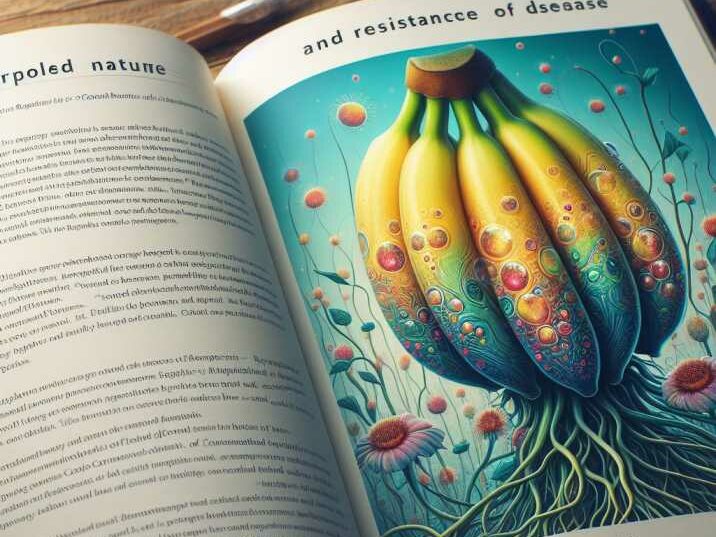Introduction:
Table of Contents
Bananas are a beloved fruit enjoyed by people all around the world for their sweetness, convenience, and nutritional value. Among the many varieties of bananas, the Cavendish banana stands out as one of the most popular choices. But what makes Cavendish bananas unique? In this article, we’ll take a closer look at the genetic traits of cavendish bananas that set Cavendish bananas apart from other types, exploring the fascinating world of banana genetics.

Exploring the Genetic Traits of Cavendish Bananas:
1. The Origin of Cavendish Bananas:
Cavendish bananas trace their origins back to Southeast Asia, where they were first cultivated. Over time, they spread to various parts of the world and have become a staple fruit in many countries.
2. Triploid Nature:
One of the unique genetic traits of Cavendish bananas is their triploid nature. Unlike most bananas, which are diploid, Cavendish bananas contain three sets of chromosomes, making them sterile and unable to reproduce through seeds.
3. Resilience to Panama Disease:
Cavendish bananas gained widespread popularity in the 20th century due to their resistance to Panama Disease, a devastating fungal infection that wiped out previous banana varieties such as the Gros Michel. This resistance is attributed to specific genetic traits that make Cavendish bananas less susceptible to the disease.
4. Uniformity in Size and Shape:
Another distinctive genetic trait of Cavendish bananas is their uniformity in size and shape. This consistency is highly valued in the commercial banana industry, as it allows for easier packaging, transport, and sale of the fruit.
5. High Levels of Potassium:
Cavendish bananas are renowned for their high potassium content, which is essential for maintaining healthy blood pressure and nerve function. This nutritional trait, influenced by their genetic makeup, contributes to the popularity of Cavendish bananas as a healthy snack choice.

Table of Information Genetic Traits of Cavendish Bananas:
| Genetic Trait | Description |
|---|---|
| Triploid Nature | Cavendish bananas contain three sets of chromosomes, making them sterile. |
| Resistance to Disease | Cavendish bananas are less susceptible to diseases like Panama Disease. |
| Uniform Size and Shape | Cavendish bananas exhibit consistency in size and shape. |
| High Potassium Content | Cavendish bananas are rich in potassium, beneficial for health. |
Conclusion:
In conclusion, What genetic traits of Cavendish bananas? the genetic traits that make Cavendish bananas unique play a significant role in their widespread cultivation and popularity. From their triploid nature to their resistance to diseases and uniform size, Cavendish bananas continue to be a staple fruit enjoyed by millions worldwide. Understanding these genetic characteristics not only deepens our appreciation for this beloved fruit but also underscores the importance of genetic diversity in ensuring the resilience of our food supply.
FAQs:
1. What makes Cavendish bananas different from other varieties?
Cavendish bananas have a triploid genetic makeup, making them sterile and resistant to certain diseases like Panama Disease.
2. Why are Cavendish bananas so popular worldwide?
Their uniform size and shape, coupled with their resistance to diseases and high potassium content, contribute to the widespread popularity of Cavendish bananas.
3. Can Cavendish bananas be grown from seeds?
No, Cavendish bananas are sterile and cannot reproduce through seeds. They are typically propagated through suckers or tissue culture.
4. Are there any risks to relying heavily on Cavendish bananas for global consumption?
Yes, the lack of genetic diversity among Cavendish bananas makes them vulnerable to new diseases and pests, highlighting the importance of biodiversity in agriculture.
5. Are there any efforts to develop new banana varieties with improved genetic traits?
Yes, researchers are continually exploring ways to breed new banana varieties with enhanced resistance to diseases and improved nutritional profiles.
